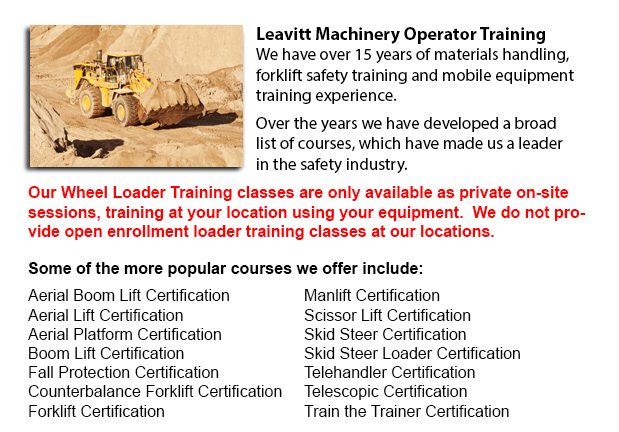
Lift trucks are available in several various units which have varying load capacities. Most average lift trucks utilized in warehouse settings have load capacities of 1-5 tons. Bigger scale units are utilized for heavier loads, like for example loading shipping containers, could have up to 50 tons lift capacity.
The operator can make use of a control so as to raise and lower the blades, that are likewise called "tines or forks." The operator can likewise tilt the mast to be able to compensate for a heavy load's tendency to tilt the tines downward to the ground. Tilt provides an ability to operate on bumpy surface as well. There are yearly competitions for experienced forklift operators to compete in timed challenges and obstacle courses at local forklift rodeo events.
General use
Forklifts are safety rated for loads at a particular utmost weight as well as a specific forward center of gravity. This vital information is provided by the maker and placed on a nameplate. It is important cargo do not go over these details. It is illegal in lots of jurisdictions to tamper with or remove the nameplate without getting consent from the forklift manufacturer.
Nearly all forklifts have rear-wheel steering to be able to enhance maneuverability. This is very effective within confined areas and tight cornering spaces. This kind of steering varies rather a little from a driver's first experience along with different motor vehicles. Since there is no caster action while steering, it is no necessary to use steering force in order to maintain a constant rate of turn.
Instability is another unique characteristic of forklift utilization. A continuously varying centre of gravity takes place with every movement of the load amid the forklift and the load and they have to be considered a unit during utilization. A forklift with a raised load has centrifugal and gravitational forces that could converge to cause a disastrous tipping mishap. To be able to prevent this possibility, a lift truck should never negotiate a turn at speed with its load raised.
Forklifts are carefully made with a particular load limit utilized for the forks with the limit lessening with undercutting of the load. This means that the freight does not butt against the fork "L" and would lower with the elevation of the tine. Generally, a loading plate to consult for loading reference is located on the forklift. It is unsafe to make use of a forklift as a worker hoist without first fitting it with specific safety tools like for example a "cage" or "cherry picker."
Lift truck use in distribution centers and warehouses
Lift trucks are an essential part of distribution centers and warehouses. It is important that the work situation they are positioned in is designed to accommodate their safe and efficient movement. With Drive-In/Drive-Thru Racking, a forklift has to go inside a storage bay which is many pallet positions deep to put down or obtain a pallet. Operators are usually guided into the bay through rails on the floor and the pallet is located on cantilevered arms or rails. These tight manoeuvres require trained operators to do the task safely and efficiently. Because every pallet needs the truck to go into the storage structure, damage done here is more frequent than with different kinds of storage. Whenever designing a drive-in system, considering the size of the fork truck, including overall width and mast width, have to be well thought out to be able to guarantee all aspects of an effective and safe storage facility.
-
Order Picker Training Burlington
Order Picker Training Burlington - Order picker's enables warehouse employees to lift pallets using forks. Also called a stock picker, this particular electrically-powered equipment is similar to a forklift except that an order picker is likewise uti... More -
Crane Certification Burlington
Crane Certification Burlington - The Crane Certification training program includes content recommended by industry regarding the efficient and safe operation of cranes. Trainees would learn the following: how to identify cranes and their component pa... More -
Overhead Crane Training Burlington
Overhead Crane Training Burlington - The overhead crane is a piece of equipment which can lift and move huge, heavy objects which can't be handled by hands. Typically, overhead cranes are fixed in place. These equipment are capable of moving huge vol... More -
Aerial Lift / Boom Lift / Man Lift / Scissor Lift Training in Burlington
Lift tables or scissor lifts could elevate both people and goods vertically. They are normally used in construction, commercial and industrial environments. Commonly, the use of a scissor lift is to lift and lower supplies from one floor of a job loc... More -
Telehandler Operator Training Burlington
Telehandler Operator Training Burlington - Telescopic Handler forklifts or telehandler forklifts are usually found on construction places and their popularity continues to rise. The versatility of telehandler forklifts ensures that they are a valuabl... More -
Forklift Training Classes Burlington
Forklift Training Classes Burlington - Forklift are heavy pieces of industrial machines that are made use of in transporting and the handling of merchandise and materials. They are often known as Lift trucks and are found in all sorts of businesses.... More -
Boom Lift Training Burlington
Boom Lift Training Burlington - Aerial platforms or also known as elevated work platforms are devices that allow workers to perform tasks and duties at elevated heights that would not be otherwise accessible. There are a variety of aerial lifts avail... More -
Bucket Truck Training Burlington
Bucket Truck Training Burlington - The Vehicle-Mounted Aerial Work Platform or also called bucket truck training program is intended to decrease the risk of incident and personal injury while working in close proximity or with bucket trucks by effici... More

Forklift Training Burlington
TOLL FREE: 1-888-254-6157
Burlington, Ontario
forklifttrainingburlington.com
Email Us
About Us


